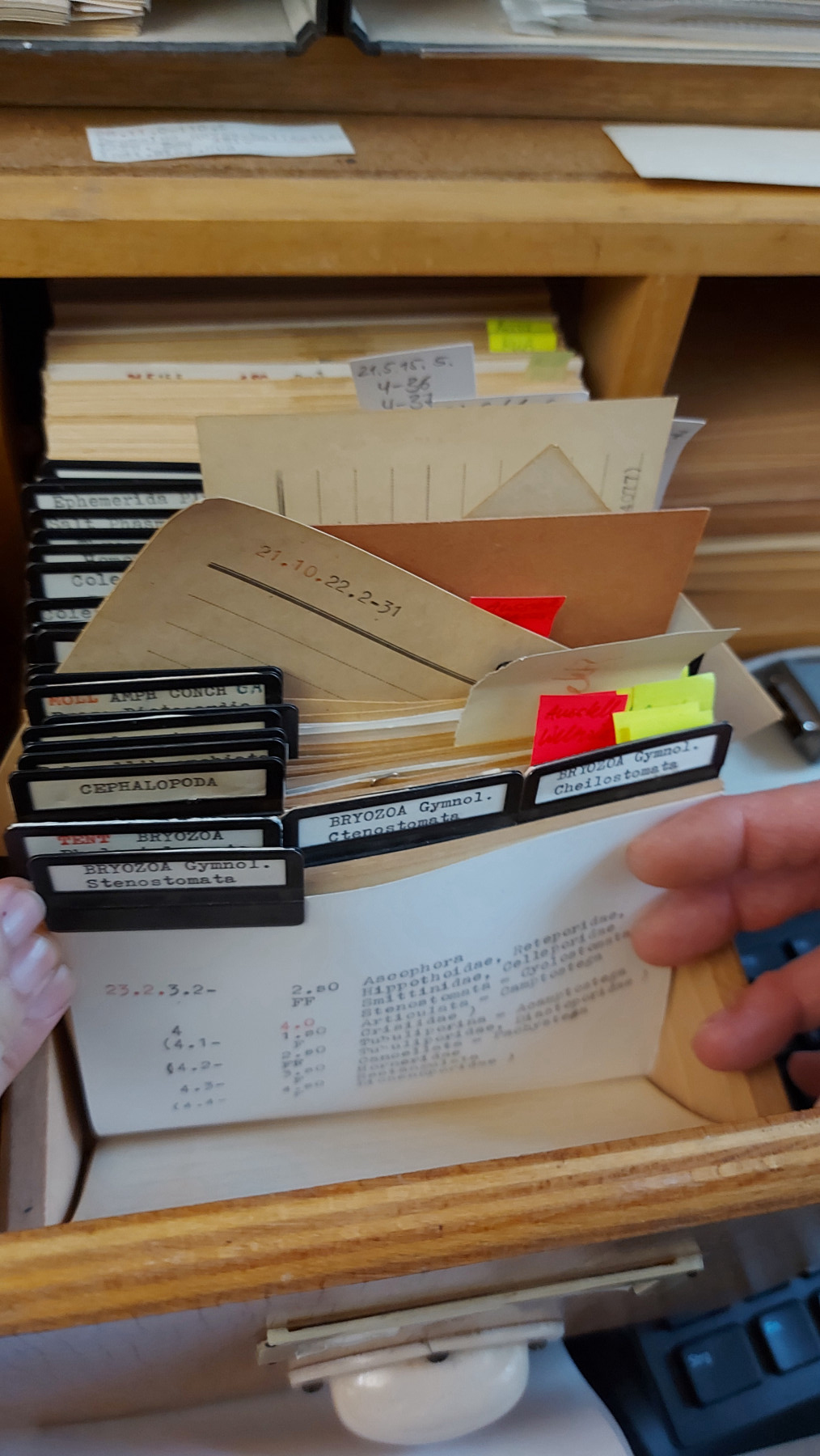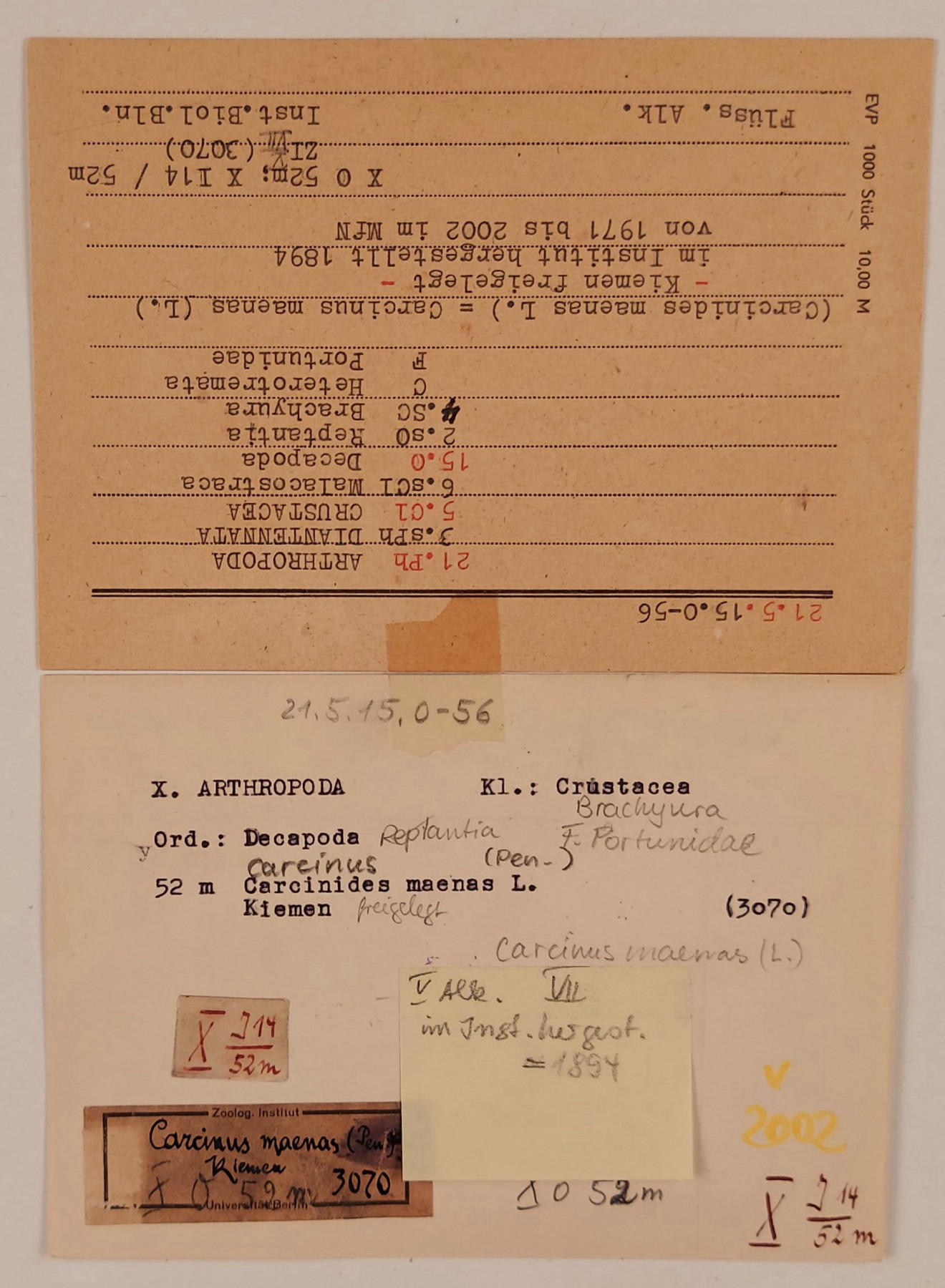

Card box in the Zoological Teaching Collection of the Humboldt-Universität zu Berlin. (Image: Theresa Schatt/Zoological Teaching Collection. All rights reserved.)
The index cards pictured here are a paper technology that is still being used to organise the  Zoological Teaching Collection of the Humboldt-Universität zu Berlin and reflects the scientific effort to
Zoological Teaching Collection of the Humboldt-Universität zu Berlin and reflects the scientific effort to  record the natural world. At first, they were used in addition to the records of items that the teaching collection had kept using
record the natural world. At first, they were used in addition to the records of items that the teaching collection had kept using  inventory books since its founding in 1884, before they completely replaced the large, heavy catalogues in 1968. For each item in the collection, whether it is a specimen like a
inventory books since its founding in 1884, before they completely replaced the large, heavy catalogues in 1968. For each item in the collection, whether it is a specimen like a  common seadragon or a model like a silkworm out of
common seadragon or a model like a silkworm out of  papier mâché or a
papier mâché or a  plastic potato bug, there is one of these cards, which bring together all of the existing information. The index cards are sorted in a card box with numbering based on the logic of
plastic potato bug, there is one of these cards, which bring together all of the existing information. The index cards are sorted in a card box with numbering based on the logic of  zoological systematics. These numerical codes, e.g.
zoological systematics. These numerical codes, e.g.  28.8.5.7-4, produce an extensive
28.8.5.7-4, produce an extensive  network, within which the individual index cards refer to each other as units of information.
network, within which the individual index cards refer to each other as units of information.

Record of a wet specimen of a  common seadragon in the Zoological Teaching Collection of the Humboldt-Universität zu Berlin. (Zoological Teaching Collection. All rights reserved.)
common seadragon in the Zoological Teaching Collection of the Humboldt-Universität zu Berlin. (Zoological Teaching Collection. All rights reserved.)
Because they are so flexible, the index cards facilitate the management of collection items. These items have been used as teaching aids since the founding of the teaching collection and are taken in and out of their display cases and carried about on a daily basis. Unlike the continuous inventory in a book or list, these cards make it easier to incorporate recently acquired objects and to modify or swap out existing ordering systems. At the same time, this loose system can also lead to the  loss or scattering of knowledge. Besides organising the collection, the index cards also record historical developments by bringing together information, entries, and
loss or scattering of knowledge. Besides organising the collection, the index cards also record historical developments by bringing together information, entries, and  corrections from various periods in the collection’s history. Comments have often been written over the printed cards by hand, and some cards have had old labels added or sticky notes attached to them. It becomes plain to see how changes have taken place in the way that collection items are organised and how
corrections from various periods in the collection’s history. Comments have often been written over the printed cards by hand, and some cards have had old labels added or sticky notes attached to them. It becomes plain to see how changes have taken place in the way that collection items are organised and how  record-keeping systems have transformed over time. These developments have always been closely linked to the individual practices of the respective collection managers and their knowledge, which has inscribed itself into and survives in the collection in this way.
record-keeping systems have transformed over time. These developments have always been closely linked to the individual practices of the respective collection managers and their knowledge, which has inscribed itself into and survives in the collection in this way.